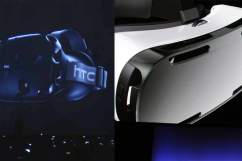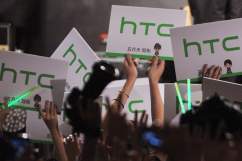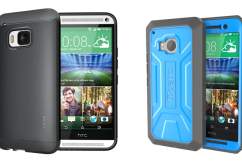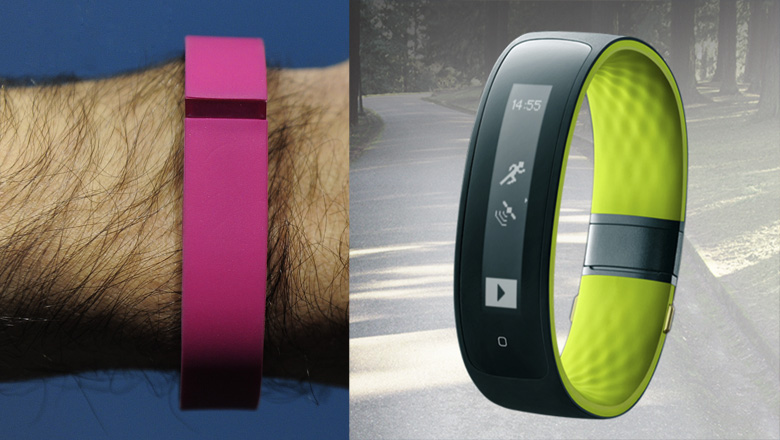
There are scores of fitness trackers on the market today, and finding the perfect tracker for you needs can be tricky. One of the leading names in the industry is Fitbit, a company that makes a wide variety of trackers that can be worn on your clothing or around your wrist. But a new wearable, HTC’s Grip, is gunning for Fitbit’s market share. The HTC Grip was made in partnership with Under Armour, and is designed to sync with the Under Armour Record app. Whether you’re shopping for your first fitness tracker, hunting for alternatives to the Fitbit, or just want to see what the state of the wearables market is these days, read on to see how the Fitbit line compares to HTC’s very first wearable.
1. HTC Grip vs. Fitbit: Brand Reputation
Get a closer look at this new HTC wearable in the player above.
It’s hard to say who has the edge when it comes to brand reputation. HTC doesn’t really have much of a rep yet, since the Grip marks their first foray into wearables. Early reviews for the HTC Grip have been a little mixed. Gizmodo has called this new device “equal parts unique and perplexing”. This device may appeal to those who already have a separate heart rate monitor, or those who don’t care about monitoring their heart rate with a wearable. HTC has also lost a little consumer goodwill by pushing back the planned release date of this wearable to 2016.
In contrast, Fitbit is a widely known brand. However, Fitbit has been the focus of not one, but two different scandals related to rashes. Last year, Fitbit issued a voluntary recall of their Fitbit Force fitness tracker after a small percentage of users reported rashes and contact dermatitis after wearing the tracker for prolonged periods. Early this year, another round of users reported rashes again. Fitbit tells people that the rash will go away if they take occasional breaks from the band.
2. HTC Grip vs. Fitbit: Compatibility
Take an alternate look at the HTC Grip in the player above, which shows all of the different sizes.
Both the HTC Grip and Fitbit line are designed to work with Android devices and iOS devices. The HTC Grip requires you have a device that runs at least iOS 7 or Android 4.3. Fitbit claims to work with the largest number of phones, more than any other tracker. You can see the whole list of supported devices here. Fitbit also works with Windows phones.
3. HTC Grip vs. Fitbit: Accessories
Get a closer look at the more affordable Fitbit Flex fitness tracker in the video above.
The Grip is HTC’s first foray into the wearables field, so there aren’t a lot of products you can pair it with. That being said, it does have the benefit of working with both iOS and Android devices. In contrast, Fitbit has branched out into one very cool accessory: a smart scale. The Fitbit Aria smart scale will upload your stats automatically via Wi-Fi to the Fitbit website. The scale can recognize up to eight different people, and comes in your choice of white or black.
The HTC Grip is waterproof, and can be submerged in up to one meter of water for 30 minutes. In terms of battery life, you can go about 5 hours between charges when the GPS is running. With GPS off, battery life is improved.
The battery life of the Fitbit line varies depending on the device you choose. Most will last at least a couple of days, if not the better part of a week. Waterproofing on some devices in the Fitbit line means that select devices are water resistant, and can be submerged up to 10 meters.
4. HTC Grip vs. Fitbit: Heart Rate Monitoring & GPS
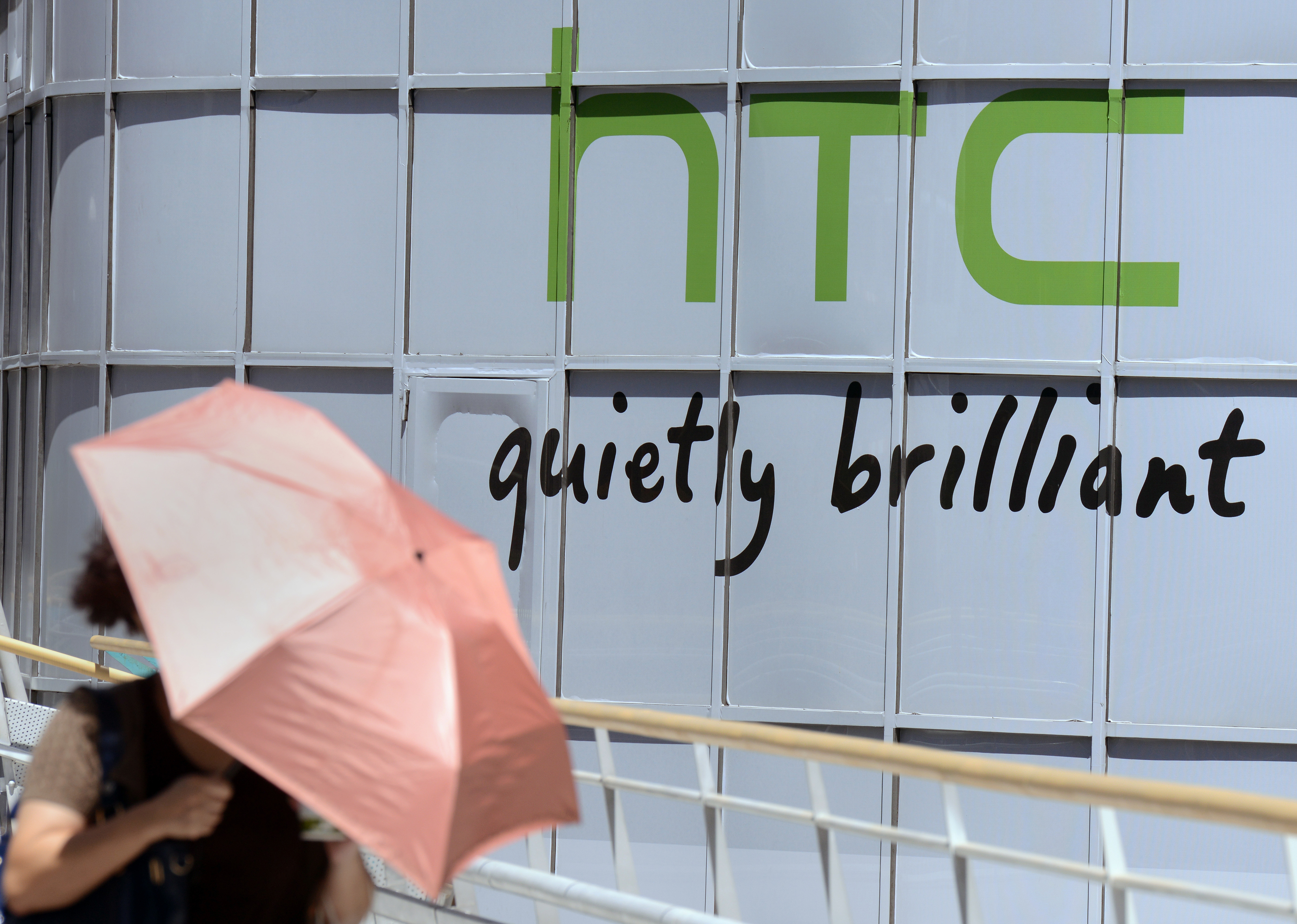
(Getty)
The HTC Grip has one major perk, and one major drawback. It does not track heart rate, but it does have GPS on board. Only one Fitbit wearable, the Fitbit Surge, has GPS. Several Fibits have heart rate monitoring, including the Surge and the Charge HR. The Fitbit Surge can go for seven days between charges.
5. HTC Grip vs. Fitbit: Final Thoughts on Fitness Trackers
Check out the video above from CNET, which outlines the differences between the Fitbit Charge, Charge HR, and Surge.
Ultimately, it’s a bit tricky to compare the new HTC Grip against the Fitbit line. For one thing, the HTC Grip samples most tech reporters have been able to experiment with are not final builds, so they have some cosmetic issues. Additionally, there isn’t a Fitbit device that is directly comparable in price to the HTC Grip. There’s the Fitbit Charge, which is a little more than half the price of the Grip, but which lacks a heart rate monitor and GPS. There’s also the Charge HR, which retails for $149.95, is still cheaper than the HTC Grip. It has heart rate monitoring, but it lacks the Grip’s GPS tracking. Then there’s the Fitbit Surge. The Surge costs more than the Grip, at $249.95, and it does have both heart rate monitoring and GPS built in.
In addition to these offerings, Fitbit also has the Fitbit Flex wristband, as well as the Zip and One, which are not worn on the wrist. The One or Zip might be ideal options for people who want the Fitbit experience, but without the rash. However, if you want a top of the line Fitbit experience that includes GPS built in, your only option is the rather expensive Fitbit Surge. If you want more color options, a Fitbit tracker is the way to go. At present, the HTC Grip seems a bit monochromatic in terms of color variants. If you need a fitness tracker in 2015, Fitbit should be your choice. The Grip isn’t hitting stores until 2016.
Buy the Fitbit Surge here.
Buy the Fitbit Charge HR here.
Sign up here to be notified when the Grip goes on sale.
Heavy, Inc. is a participant in the Amazon Services LLC Associates Program, an affiliate advertising program designed to provide a means for sites to earn advertising fees by linking to Amazon. Our product recommendations are guided solely by our editors. We have no relationship with manufacturers.
